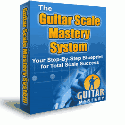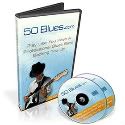Practicing scales is one of the most important thing you can do to improve your overall playing. It helps build your finger dexterity, speed and also lays the ground work for playing solo passages later. One of the more popular scales is the minor guitar scale. It is commonly found in most rock and is the preferred scale in heavy metal. This article aims to familiarize you with the five different minor guitar scales employed by many of today's guitar greats.
Minor Guitar Scale #1: Pentatonic Minor
The pentatonic minor scale is a scale made up of just five notes and is by far the easiest to learn and play with. Many guitarists love this scale because it is hard to play a wrong note when using it for guitar solos. It also has a very unique sound due to the large intervals between each pitch.
Minor Guitar Scale #2: Aeolian Minor
The aeolian minor scale is often referred to as the natural minor scale. It is the sixth mode of the major scale. A mode is what you get by playing the major scale starting on the sixth note and ending on the sixth note. You do not need to understand this to play a minor scale though. Just know that a natural minor scale will work well with any minor chord.
Minor Guitar Scale #3: Harmonic Minor
A harmonic minor scale is a natural minor scale with a raised seventh. It has a very distinct sound and is popular among Neoclassical guitar players like Yngwie Malmsteen. The raised seventh provides a leading tone to the root note and sounds great when played over a V7 - i chord progression.
Minor Guitar Scale #4: Dorian Minor
Dorian Minor is the second mode of the major scale. It it very popular in jazz and many jam bands like the Allman brothers. To play a dorian scale simply think of a natural minor scale with a raised sixth. This scale lends it self well to any minor chord but is especially useful for minor seventh chords and minor ninth chords.
Minor Guitar Scale #5: Phyrigan Minor
Phyrigan minor is a popular one among Flamenco, Spanish and metal players. You can get a phyrigan scale by playing a natural minor with a flatted second. Use it over minor and minor seventh chords.
There is an almost endless number of licks you can use in a minor context once you learn and understand the five fundamental minor guitar scales. As you saw above they all work well over a minor chord. The only thing to watch out for is the more jazzy minor sevenths and ninths. The only way to fully master these is to practice them and try mixing them together for a truly unique sound that you can call your own.
John Hughes has been playing guitar for longer than he can remember. Aside from teaching guitar for the last three years he enjoys writing articles about playing lead guitar and other guitar related topics. If you are serious about mastering the use of different minor guitar scales you owe it to yourself to check out Guitar-Scale-Mastery.info





